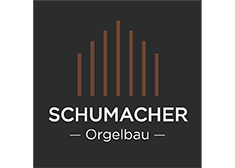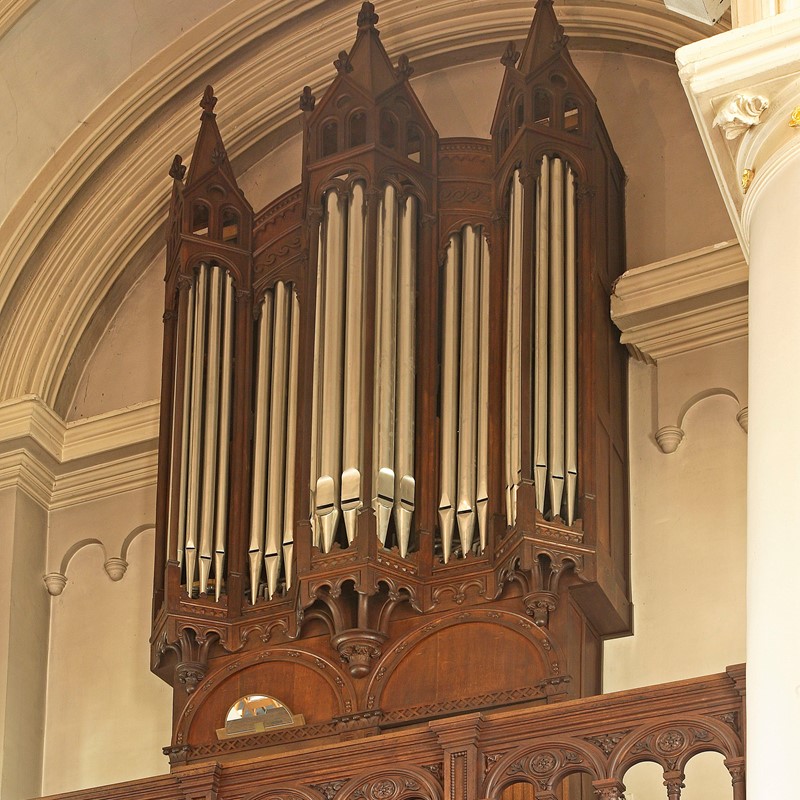Godsheide (Hasselt, B) | Our Lady of Visitation
It was in 1869 that the first organ was built for the parish of Godsheide (Belgium), almost 11 years after the inauguration of the church.
It was built by Peter-Jan Vermeulen (1830-1910) from Weert in the Netherlands. The specification is typical of the local organ building style of the time with a preponderance of foundation stops only lightened by a 2' stop on each manual and enriched by a reed stop.
The slender case of oak consists in a façade put in front of an arch. Its stylistic language marries successfully Neo-Byzantine and Neo-Roman elements.
In the course of its existence, the instrument underwent no significant change except for the replacement of the bellows, the electrical blower and some minor changes in the specification. The instrument was classified as an historical monument in 1975.
The work undertaken aimed at restoring the original sound, and some borrowed low octaves, added in the course of this century, were removed. Also the Euphone 8' of the second manual, a free reed which was quite rarely used in our region was restored, a copy having been made.
To ensure the perfect and long-lasting functioning of the instrument some changes had to be made thus the part of the action of the two manuals which had fan-shaped backfalls was replaced by rollerboards.
The windchest of the second manual, originally behind the Great, was put further back so as to enable the extension of the former walkboard which was too narrow.
A new horizontal bellows was built in the original style and placed in the lower part of the instrument.
All the other parts were also strictly restored in the original style.
The voicing revealed an unexpected sound world from the end of the 19th century, full of finely shaded tones. The powerful Trumpet of the Great contrasts vividly with the mellow sound of the Euphone. This type of organ is particularly well-suited to the accompaniment of liturgy and to the interpretation of minor romantic works.
Stop list
Grand-Orgue
C – g '''
Montre 8'
Bourdon 16'
Viola di Gamba 8'
Prestant 4'
Bourdon 8'
Miliphona 4'
Fluit travers 4' sup.
Fluit 4'
Octaaf 2'
Cornet V
Trompet 8' bas / sup.
Positif
C – g '''
Euphona 8' bas / sup.
Piccolo 2'
Fugara 4'
Bourdon 8'
Salicional 8'
Pedalier
C – g °
Tirasse fixe GO



